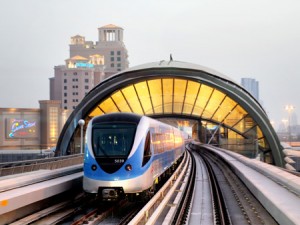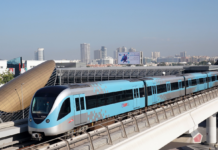By Bernhard Zand www.spiegel.de
 Recently a lot of the news coming out of Dubai has been grim. The high flying Arab Emirate seemed to be diving head-first into the recession at the same pace at which it had ascended into the business firmament. Grand plans were put on ice, the owners of a real estate agencies were suddenly unemployed and managers from around the world planned their escape from the region, leaving luxury cars, only half paid for, in the airport parking lot.
Recently a lot of the news coming out of Dubai has been grim. The high flying Arab Emirate seemed to be diving head-first into the recession at the same pace at which it had ascended into the business firmament. Grand plans were put on ice, the owners of a real estate agencies were suddenly unemployed and managers from around the world planned their escape from the region, leaving luxury cars, only half paid for, in the airport parking lot.
But now it looks like the global recession is nearing its end and that is why, this autumn, the sheiks are revisiting one of their ambitious projects from the past. And with a carefully planned marketing campaign too. On Wednesday, at 9:09 p.m. on the ninth day of the ninth month of 2009, the first train went into service on the brand new Dubai Metro. The opening of the Burj Dubai, which will be the tallest building in the world and which was originally supposed to open on the same day, has been postponed until December. “This way the bells can be rung twice,” Bernhard Solleder, a German banker in Dubai, speculates.
The display of Arabian prowess will go on, too. In November neighboring emirate Abu Dhabi will open a Formula One racetrack and in February the America’s Cup, one of the oldest and most prestigious yacht races in the world, will be held off the coast of another emirate, Ras Al Khaimah.
“We will have to see if investors get carried away with this second wave, in the same way that they did the first,” Solleder says.
But first up is Dubai’s new metro. The Red Line runs for 52 kilometers, it has 29 stations and separate compartments for first class passengers and for women. It also has wireless Internet service on every train. But most significantly, it only took 30,000 workers four years to finish the world’s “longest fully-automated, driverless metro system.” That’s not bad if you compare it to the German capital’s most recent underground stationopening, the so-called Chancellor’s Line in Berlin. It has three stations, is 1.8 kilometers long and it took 13 years to build, albeit with breaks in the construction work.
Of course not everything went completely smoothly in Dubai, a city that generally doesn’t let planning permission or environmental issues get in the way of progress. Coming in at €5.25 billion ($7.64 billion), the costs were almost double the original estimates. For the time being, only 10 stations have been opened.
A Monument to Delusions of Grandeur
Halfway along the route between the city center and the Jebel Ali container port stands a monument to delusions of grandeur that does not bode well for the future of the metro line: The Palm Jumeirah Monorail, which whisks passengers to the man-made island resort of the same name.
The monorail also impresses passengers with its air-conditioned stations and fantastic views. It’s just that nobody rides it. The planners forgot to connect it to the rest of the public transport system. They also underestimated — or, perhaps, didn’t dare contemplate — how rapidly the recession would reduce construction work on the artificial island. This, of course, may serve as a minor consolation for the Europeans — is there a point to civic planning procedures after all?
Additionally, Dubai’s metro has two other problems that European planners have never even had to consider. When it’s 40 degrees Celsius (104 degrees Fahrenheit) in the shade, how do you get people onto a metro without giving them all heat stroke? And how do you lure them out of their cars in a city where only costs 25 cents a liter?
The answer to the first question involves huge, air-conditioned pedestrian bridges in an elegant shell pattern that only delicately disrupts the tops of the train stations as well as a flotilla of transit buses, including several hundred made in Germany. Because cab fares in Dubai are still relatively low, though, it is most likely that a lot of passengers will choose to head to the train station in a taxi at first.
The second question — to do with the price of petrol — is a more difficult one to answer. Dubai is almost as obsessed with cars as Los Angeles is. Only six percent of Dubai’s inhabitants use public transport. The Dubai Metro is going to change that, the city fathers say. By next summer, when the second subway line will open, they expect passengers to make 200 million trips a year.

















